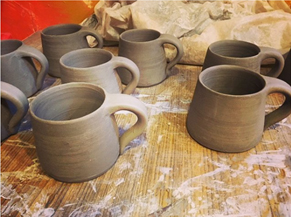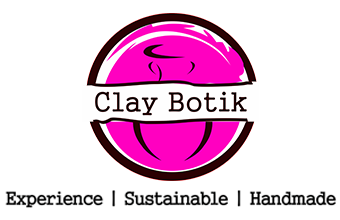PREPARATION OF CERAMIC CLAY
The initial phase in working in ceramic production is the finding of a clay body. A few potters still burrow their clay and feel a significant association with the earth through this procedure. Most purchase monetarily accessible ceramic clay bodies from one of the numerous fired providers in the territory they live as transportation costs for something as substantial as clay can get costly.
WEDGING THE CERAMIC CLAY
Wedging is the way toward blending the ceramic clay by hand by pivoting and squeezing a mud ball on a table. The reason for existing is to completely to expel all air bubbles. This is especially significant, as the nearness of air rises in the ceramic clay, which will bring about blasts in the furnace as the air pockets extend and burst. You will know whether there is air in the ceramic clay, as in Swiss cheddar when you cut through the earth with a wire.

FORMATION OF THE CLAY
After the ceramic clay has been altogether wedged, it might be framed by an assortment of strategies: section, wheel, loop, squeeze, and shape. These techniques might be joined, or utilized independently.

DRYING THE CERAMIC CLAY
At the point when the clay sack is opened, the drying procedure starts. As the ceramic Clay dries, it loses water, gets stiffer, and shrinkage starts. In the wake of framing, pieces you make ought to be enclosed by delicate sheets of plastic (without openings) and put on the racks in the DAMP ROOM. The plastic will back off(however not stop) the drying procedure, to guarantee that when you return a few days after the fact, your pieces will at present be functional.

LEATHERHARD
After your pieces have dried for a couple of days in the moist room in plastic, clay will reach of the phase of halfway dryness alluded to as leather hard. This is an amazing time to refine the piece: cutting overabundance ceramic clay, including handles or embellishing components, cutting the foot-ring off the ceramic pot, and so forth. This is the last possibility you need to change the state of the piece! Significantly, you have the option to perceive this stage. When the ceramic clay has dried past, at this point no further shape changes can be practiced.

GREENWARE
At the point when our ceramic clay has dried, it is alluded to as a bit of greenware. This implies it has lost all water through vanishing and has no adaptability. Twisting it will break it. You can’t cut anything from it. This is absolutely an aloof state for the clay anticipating the principal terminating. After you have completed work on a piece, you should convey it from the moist room and spot it cautiously on the greenware racks.

BISQUE FIRING THE CERAMIC POTS
After ceramic clay has dried to greenware on the racks, and enough pieces have collected to fill an oven, the work is stacked into the furnaces for the first of two firings. This terminating is to roughly 1800 degrees F. For this situation water, is consumed by the permeable bisque product, and the polished materials in the coating are left stored on the outside of the bisque product. Thus, the bisque procedure is essentially done to make coating simpler. On the very first moment, the oven is stacked with the dry greenware and the furnace is lit, set at a low setting to dry the product, and left medium-term to gradually warm. Then the oven is opened, the bisque product expelled, and the clay comes back, where it is put away on racking stamped BISQUE WARE.

GLAZINGTHE CERAMIC POTS
After you have terminated your ceramic pot, you would now be able to add shading to it. Coatings are exceptional, mineral-based paint that, when terminated, transforms into a hard, smooth, gleaming spread for ceramic pot. Try not to get coat onto the base since it will dissolve the ceramic pot onto the furnace and you should break your pot to expel it.
FINAL FIRING OFTHE CERAMIC POTS
After the coating is dried, your ceramic pot will be terminated again in the oven to make the hues hard and gleaming. This terminating is additionally hot. When your ceramic pot is done and chilled, you are done with it, your pottery process ends here.
We at Clay Botik also conduct workshops, which makes you go through all the above-mentioned steps in detail. For any further information regarding the workshops feel free to visit our website- https://claybotik.com
References:



